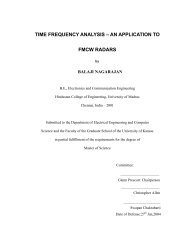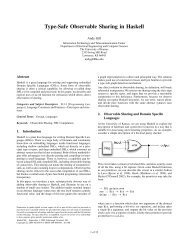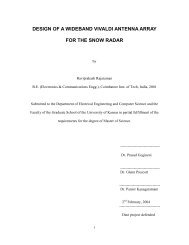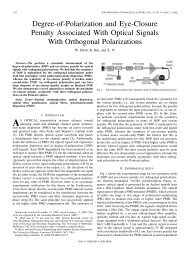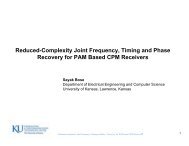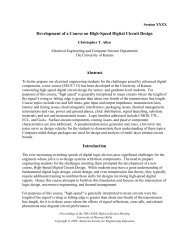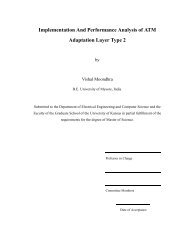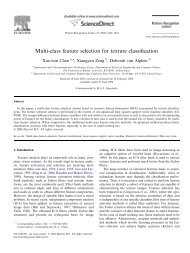Algorithms and Data Structures for External Memory
Algorithms and Data Structures for External Memory
Algorithms and Data Structures for External Memory
Create successful ePaper yourself
Turn your PDF publications into a flip-book with our unique Google optimized e-Paper software.
46 <strong>External</strong> Sorting <strong>and</strong> Related Problems<br />
blocks of Σ in reverse order. In the case of the write-once problem, the<br />
following natural greedy output algorithm is optimum: As the blocks<br />
of Σ R are written, we put each block into an output buffer <strong>for</strong> its<br />
designated disk. There are m output buffers, each capable of storing<br />
one block, so the writing can proceed only as quickly as space is freed<br />
up in the write buffers. In each parallel I/O step, we free up space by<br />
outputting a queued block to each disk that has at least one block in<br />
an output buffer. The schedule of I/O output steps is called the output<br />
schedule, <strong>and</strong> it is easy to see that it is optimum in terms of the number<br />
of parallel I/O steps required. Figure 5.6, when read right to left, shows<br />
the output schedule <strong>for</strong> the reverse sequence Σ R .<br />
When we run any output schedule <strong>for</strong> Σ R in reverse, we get a valid<br />
prefetch schedule <strong>for</strong> the original sequence Σ, <strong>and</strong> vice versa. There<strong>for</strong>e,<br />
an optimum output schedule <strong>for</strong> Σ R , which is easy to compute in a<br />
greedy fashion, can be reversed to get an optimum prefetch schedule<br />
<strong>for</strong> Σ. Figure 5.6, when considered from right to left, shows an optimum<br />
output schedule <strong>for</strong> sequence Σ R . When looked at left to right, it shows<br />
an optimum prefetch schedule <strong>for</strong> sequence Σ.<br />
The prefetch schedule of Figure 5.6 is “lazy” in the sense that the<br />
input I/Os seem to be artificially delayed. For example, cannot block e<br />
be input earlier than in step 4? Hutchinson et al. [202] give a prudent<br />
prefetching algorithm that guarantees the same optimum prefetch<br />
schedule length, but per<strong>for</strong>ms I/Os earlier when possible. It works by<br />
redefining the priority of a block to be the order it appears in the input<br />
step order of the lazy schedule (i.e., a, b, f, c, i, . . . in Figure 5.6).<br />
Prefetch buffers are “reserved” <strong>for</strong> blocks in the same order of priority.<br />
In the current I/O step, using the language of Section 5.3.1, we input<br />
every block in P that has a reserved prefetch buffer. Figure 5.7 shows<br />
the prudent version of the lazy schedule of Figure 5.6. In fact, if we<br />
iterate the prudent algorithm, using as the block priorities the input<br />
step order of the prudent schedule of Figure 5.7, we get an even more<br />
prudent schedule, in which the e <strong>and</strong> n blocks move up one more I/O<br />
step than in Figure 5.7. Further iteration in this particular example<br />
will not yield additional improvement.







